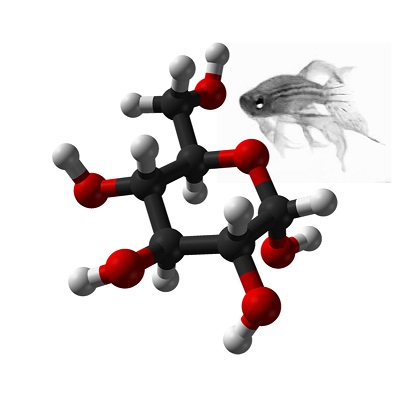Abstract
G protein-coupled receptors (GPCRs) comprise the largest group of membrane receptors in eukaryotic genomes and collectively they regulate nearly all cellular processes. Despite the widely recognized importance of this class of proteins, many GPCRs remain understudied. G protein-coupled receptor 27 (Gpr27) is an orphan GPCR that displays high conservation during vertebrate evolution. Although, GPR27 is known to be expressed in tissues that regulate metabolism including the pancreas, skeletal muscle, and adipose tissue, its functions are poorly characterized. Therefore, to investigate the potential roles of Gpr27 in energy metabolism, we generated a whole body gpr27 knockout zebrafish line. Loss of gpr27 potentiated the elevation in glucose levels induced by pharmacological or nutritional perturbations. We next leveraged a mass spectrometry metabolite profiling platform to identify other potential metabolic functions of Gpr27. Notably, genetic deletion of gpr27 elevated medium-chain acylcarnitines, in particular C6-hexanoylcarnitine, C8-octanoylcarnitine, C9-nonanoylcarnitine, and C10-decanoylcarnitine, lipid species known to be associated with insulin resistance in humans. Concordantly, gpr27 deletion in zebrafish abrogated insulin-dependent Akt phosphorylation and glucose utilization. Finally, loss of gpr27 increased the expression of key enzymes in carnitine shuttle complex, in particular the homolog to the brain-specific isoform of CPT1C which functions as a hypothalamic energy senor. In summary, our findings shed light on the biochemical functions of Gpr27 by illuminating its role in lipid metabolism, insulin signaling, and glucose homeostasis.
